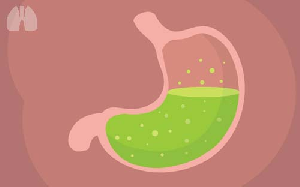
Amira Benattia, Emmanuelle Bugnet, Anouk Walter-Petrich, Constance de Margerie-Mellon, Véronique Meignin, Agathe Seguin-Givelet, Gwenaël Lorillon, Sylvie Chevret, Abdellatif Tazi
European Respiratory Journal 2022 59: 2101017; DOI: 10.1183/13993003.01017-2021
Abstract
Background The long-term outcomes of adult pulmonary Langerhans cell histiocytosis (PLCH), particularly survival, are largely unknown. Two earlier retrospective studies reported a high rate of mortality, which contrasts with our clinical experience.
Methods To address this issue, all patients with newly diagnosed PLCH referred to the French national reference centre for histiocytoses between 2004 and 2018 were eligible for inclusion. The primary outcome was survival, which was defined as the time from inclusion to lung transplantation or death from any cause. Secondary outcomes included the cumulative incidences of chronic respiratory failure (CRF), pulmonary hypertension (PH), malignant diseases and extrapulmonary involvement in initially isolated PLCH. Survival was estimated using the Kaplan–Meier method.
Results 206 patients (mean age 39±13 years, 60% female, 95% current smokers) were prospectively followed for a median duration of 5.1 years (IQR 3.2–7.6 years). Of these, 12 patients (6%) died. The estimated rate of survival at 10 years was 93% (95% CI 89–97%). The cumulative incidences of CRF and/or PH were <5% at both 5 and 10 years, and 58% of these patients died. 27 malignancies were observed in 23 patients. The estimated standardised incidence ratio of lung carcinoma was 17.0 (95% CI 7.45–38.7) compared to an age- and sex-matched French population. Eight (5.1%) of the 157 patients with isolated PLCH developed extrapulmonary involvement.
Conclusion The long-term prognosis of PLCH is significantly more favourable than has previously been reported. Patients must be closely monitored after diagnosis to detect severe complications early.
The long-term prognosis of PLCH is significantly more favourable than has previously been reported. Patients must be closely monitored after diagnosis to detect and manage severe complications early. https://bit.ly/3asyshv
Footnotes
-
This article has supplementary material available from erj.ersjournals.com
-
The study was registered with www.ClinicalTrials.gov (NCT04665674). Requests for data supporting the results reported in the current study will be reviewed on an individual basis by the director of the hospital clinical trial unit, and data will be available following publication.
-
Conflict of interest: A. Benattia has nothing to disclose.
-
Conflict of interest: E. Bugnet has nothing to disclose.
-
Conflict of interest: A. Walter-Petrich has nothing to disclose.
-
Conflict of interest: C. de Margerie-Mellon has nothing to disclose.
-
Conflict of interest: V. Meignin has nothing to disclose.
-
Conflict of interest: A. Seguin-Givelet reports personal fees for lectures from Medtronic and AstraZeneca, outside the submitted work.
-
Conflict of interest: G. Lorillon reports travel grants from Vitalaire, outside the submitted work.
-
Conflict of interest: S. Chevret has nothing to disclose.
-
Conflict of interest: A. Tazi reports personal fees for lectures from Chiesi and BMS, and travel grants from Vitalaire, AstraZeneca, Boehringer Ingelheim and Teva, outside the submitted work.
-
Support statement: This study was supported by a grant from the French Ministry of Health. Funding information for this article has been deposited with the Crossref Funder Registry.
- Received April 8, 2021.
- Accepted October 2, 2021.
- Copyright ©The authors 2022. For reproduction rights and permissions contact permissions@ersnet.org














